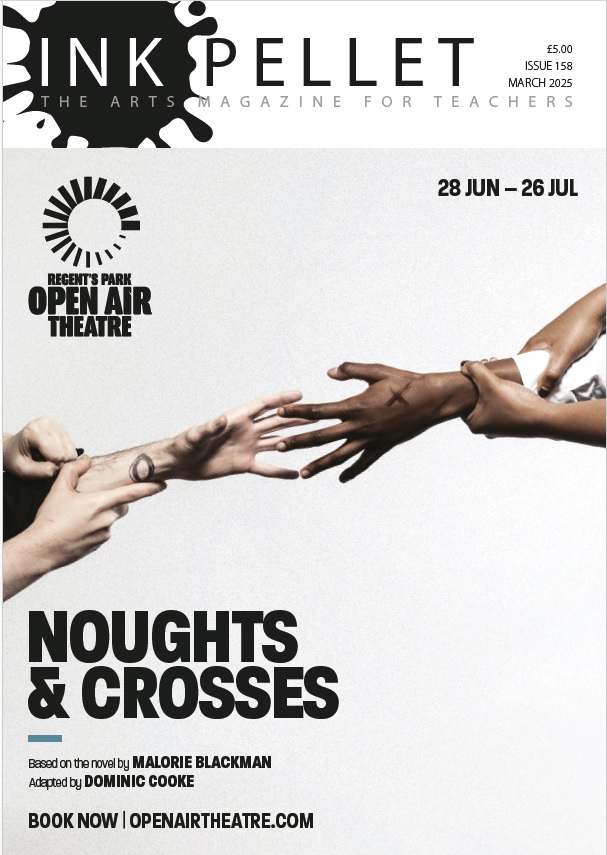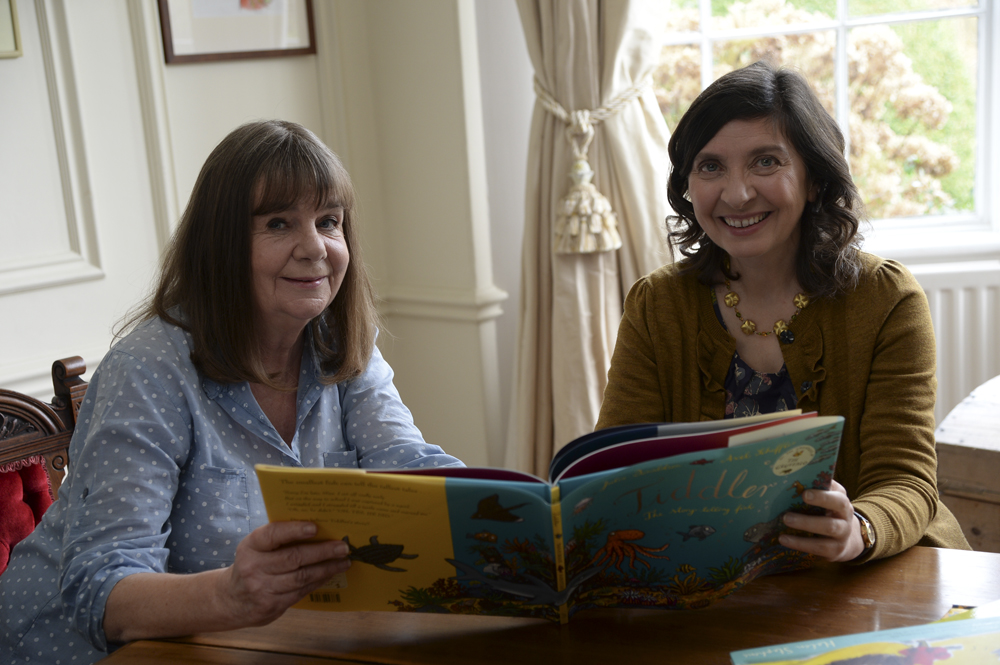Have you ever wanted to write a children’s picture book – like The Gruffalo or What the Ladybird Heard? Or even wondered how the creative process works? Well now you can find out. Julia Donaldson, with 218 books to her credit many of them world famous, is offering a brand-new digital tutorial course via BBC Maestro which has partnered with BBC Studios to offer this and other courses by other successful creative experts.
It consists of a series of short lessons which include things like how a picture book is physically assembled, how to pitch your idea, to rhyme or not to rhyme and much more. “It wasn’t my idea but it’s a really exciting new challenge and an opportunity to expand”, says Julia who is 72. “I’m always asked questions at events and this course answers all of them.”
She and I are chatting at her home in Sussex at a table on her patio, a glorious vine growing over our heads. Her husband Malcolm – a retired paediatrician who is wearing a Gruffalo tee-shirt and is part of most of Julia’s activities – has made me a cup of tea. As we talk, I can hear strains of him at his Zoom piano lesson in the room behind us. Julia was on the phone when I arrived (early) so I had time to make the acquaintance of the tadpoles in their “wilding” pond in the far corner of their glorious cottage garden.
“I’ve kept all the books my children had so I went back to those for research when I was putting this course together,” she says. “I also asked every publisher to send me a copy of their best five picture books in the last ten years. I got samples from the US too. I really needed to get up to date information about the picture book today” Julia’s course would, she thinks, be useful for teachers because so many of them are so creative in the way they develop creative writing projects. At this she fetches a box and shows me some of the books by children and teachers that she’s been sent over the years, adding in passing that she employs an assistant to help her, among other things, deal with her postbag.
So how did this successful creative journey begin? Julia Shields, who came from a musical and linguistically accomplished family went, after Camden Girls School, to read drama and French at Bristol University where she acted in productions, already an enthusiastic pianist, learned to play guitar. There she met Malcolm Donaldson who played left-handed guitar and was a keen amateur actor. Soon, with friends, they were busking in pubs and at festivals. She wrote some of the songs they sang.
And eventually, after a stint writing songs for BBC children’s programmes, becoming the mother of three boys (one of whom died in 2003) and living wherever Malcolm’s career took them, something unexpected happened. “I’d written a song called A Squash and a Squeeze for BBC’s Playboard programme in 1975. Sixteen years later, in 1991, Methuen Publishing approached me and asked if the song could be made into a picture book with illustrations by a German artist Axel Scheffler who was living in London.”
It gave her the confidence to exhume some plays and other things she’d written over the years and send samples to an educational publisher. For several years she was published exclusively by Heinemann and Ginn – plays for younger classes and stories for reluctant readers.
Then came the big turning point. And it began with a G. First she read a Chinese story about a little girl who escapes being eaten by a tiger by claiming to be the Queen of the Jungle and agonised over what she might do with it for a while. “Then the girl became a mouse and I thought of woodland creatures rather than jungle ones. And I needed a monster. His name had to end in O to rhyme with ‘know’. Gr sounded fierce at the beginning and I filled it in with ‘uffal’ to make it sound a bit like a buffalo but scarier.”
Not that it was easy to write. “One of my sons asked why the fox owl and snake didn’t simply eat the mouse on the spot and I resolved that by inserting the question: ‘Where are you meeting him? Here, by these rocks. And his favourite food is roasted fox’ with similar lines for the other two predators.” When she was happy with it, she sent it to Axel Sheffler, whom she knew only slightly. Within days there was an offer from Macmillan Children’s Books and The Gruffalo was published in 1999.
It won awards, has been translated into more than 100 languages and has sold over 17 million copies worldwide. It also led to many other collaborations with Axel, although Julia does also work with other illustrators. She shows me a box of letters she has had from Axel over the years. The envelopes are delightfully, wittily and appropriately illustrated. “For a long we communicated only by snail mail and not that often”, she says, “But I do have his email now and we’re in touch more.”
So what else does Julia do? “Well I’m known for my picture books, but I’ve also written a novel for teenagers and a series of phonics books. “Of my 218 titles a hundred are trade titles and the rest are for the education market”. Of course she has done many school visits in the past but now confines herself to a handful of local ones.
She doesn’t create picture books by sitting down systematically every day. “That’s how I wrote my teenage novel” Julia says, “But picture books are different. I have to get an idea – perhaps while I’m out walking – and then brainstorm words, phrases and lines eventually picking the ones which really tell the story clearly in a condensed way. It often means jettisoning lines I really like. I don’t always tell stories in rhyme by the way, but if it’s prose it has to be patterned by use of, for example, alliteration.”
What about drama and dramatisations? “Tall Stories theatre company has dramatised The Gruffalo and some other titles. “That’s good news for everyone really because they do it well and it’s free publicity for the publisher.” Other companies have sometimes adapted and produced other titles. Two days after my meeting with Julia I am, for example, due to review a Little Angel Theatre production of The Smartest Giant in Town which she tells me she too is looking forward to seeing. “Little Angel is great” she says. “They made some lovely puppets for us.”
And that brings us neatly to the other strand of Julia’s work. “Although I’m happy with most of the dramatisations of my books, what I like best is the way we do it ourselves” she chuckles, telling me that they have a “props room” upstairs in the house.
Performance seems to have been something she and Malcolm have enjoyed doing together since they first met (they were married in 1972). So they have it well honed now. “We do a one hour show in which we tell four stories and sing three songs” says Julia, telling me that they take this to events and festivals and, of course, she signs books afterwards. Sometimes they take a third actor with them to wear a costume. For instance, when they tell the story of The Gruffalo, Julia plays the mouse and Malcolm the other animals. Then at the end, someone wears the Gruffalo suit and Malcolm voices him from the side. “Our next event is part of the Udderbelly Festival at Earls Court this summer.”
Copies of Julia’s new book, Woolly Bear Caterpillar, have arrived on the morning of our meeting so she fetches a copy to show me. Illustrated by Youval Zommer, it is utterly exquisite, detailing in story from the titular creature’s metamorphosis. At the back is a small inset book providing the biological facts in accessible form which is a nice touch.
And of course, the work never stops. Julia and Malcolm have an astonishing nine grandchildren under eleven. “The youngest, the baby, whose family live in Scotland is named Malcolm. “They call him ‘Baby Grandpa’ which is a good title and idea for a book…”
Julia’s ‘Writing Children’s Picture Books’ course costs £80 for 6 hours of tuition and exercises: www.bbcmaestro.com It launched on 17 June.
Julia’s new book Woolly Bear Caterpillar was published by Macmillan Children’s Books on 24 June.



